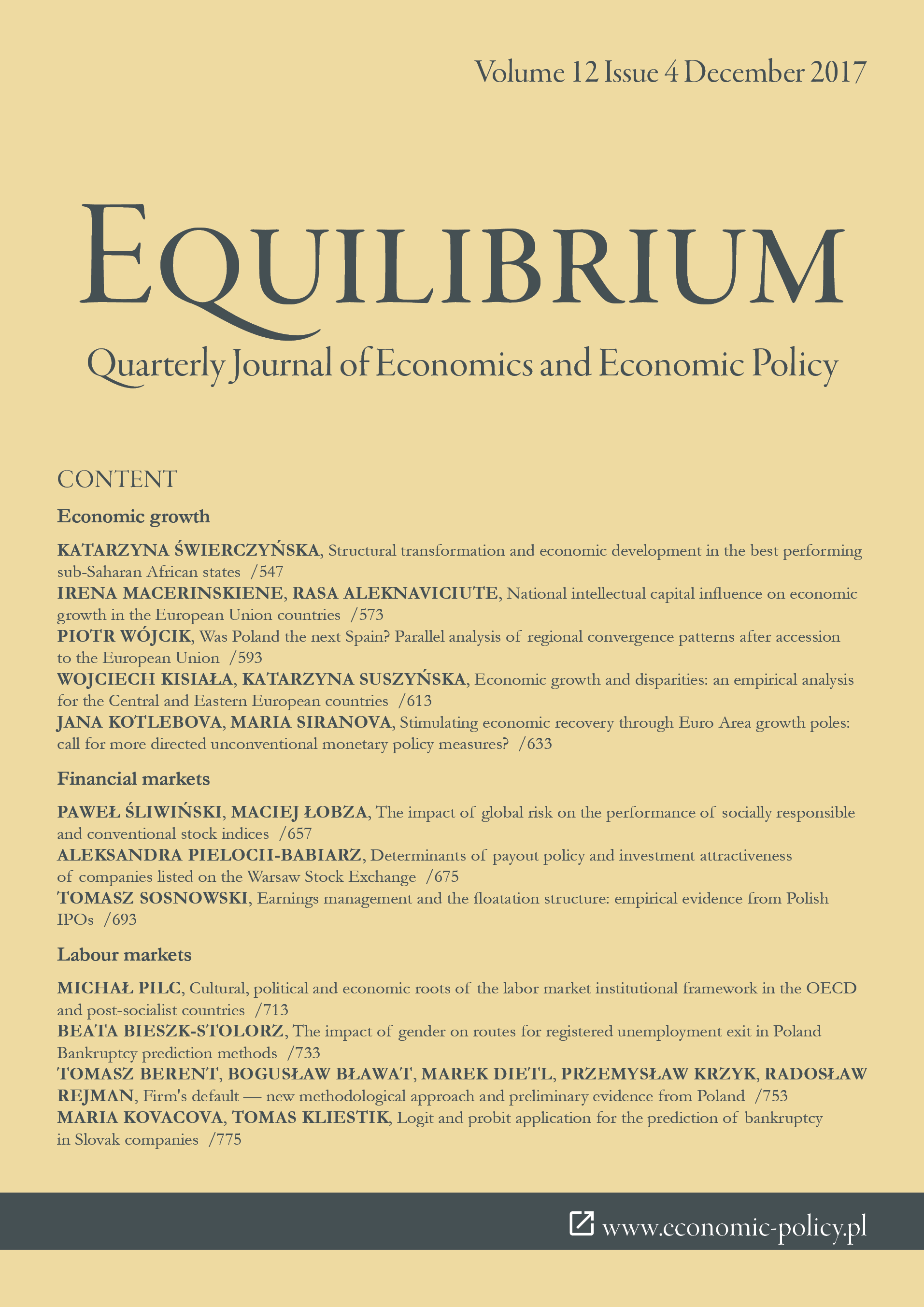Economic growth and disparities: an empirical analysis for the Central and Eastern European countries
Economic growth and disparities: an empirical analysis for the Central and Eastern European countries
Author(s): Wojciech Kisiała, Katarzyna SuszyńskaSubject(s): Economy, Geography, Regional studies, Economic policy, Evaluation research, Economic development
Published by: Instytut Badań Gospodarczych
Keywords: economic growth; regional inequalities; Williamson’s hypothesis; econometric modeling; Central and Eastern Europe
Summary/Abstract: The processes of economic convergence observed in many developing countries are characterized by reduction of economic differences on the cross-country level, which are accompanied by growing internal economic inequalities. This may stem from the fact that in the catching-up countries, a more dynamic growth pattern is observed in the economically strongest regions, which is initially reflected in spatial polarization and increasing regional inequalities. However, just as the countries reach higher levels of development, the diffusion of growth-inducing impulses to less-developed areas should lead to the spatial equalizing of the development levels and reducing regional inequalities. Purpose of the article: The aim of the paper is to determine the relationship between the level of economic growth and observed economic inequalities in Central and Eastern European (CEE) countries. The theoretical framework adopted to describe and explain those relations is the so-called Williamson’s hypothesis in which the relationship between the scale of regional inequalities and economic growth is illustrated by a curve shaped like an inverted U. Methods: The research procedure was intended to verify Williamson’s hypothesis by estimating parabolic econometric models. Indicators of economic growth along with measure of regional inequalities (Williamson’s coefficient of variation) were used in the regression modeling. The research period spanned the years 1995-2014. Findings & Value added: In the light of the study of CEE countries, it was possible to observe both convergence symptoms as well as divergence tendencies. It can be thus stated that the analyzed CEE countries followed a similar path to the one observed earlier by Williamson in other developing countries. However, the analyses conducted by the authors at the national and regional levels of CEE countries were equivocal and did not fully support the theoretical assumptions of Williamson’s hypothesis.
Journal: Equilibrium. Quarterly Journal of Economics and Economic Policy
- Issue Year: 12/2017
- Issue No: 4
- Page Range: 613-631
- Page Count: 19
- Language: English

